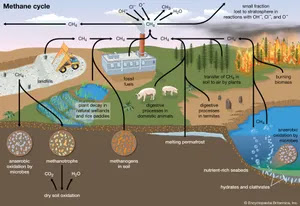Usina termelétrica a carvão de Ratcliffe-on-Soar, na Inglaterra -
O mais poluente dos combustíveis fósseis, carvão deixará de gerar eletricidade no país após mais de 140 anos
Com o fechamento da usina Ratcliffe-on-Soar nesta segunda-feira (30), o Reino Unido se tornará o primeiro país do G7, grupo que reúne as nações mais desenvolvidas do mundo, a abrir mão da produção de energia a carvão.
O momento encerra mais de 140 anos do mais poluente entre os combustíveis fósseis para o fornecimento de eletricidade no país, que foi o berço da Revolução Industrial —considerada um marco no aumento de emissões de gases de efeito estufa pelas atividades humanas.
Em 2015, o Reino Unido anunciou planos para fechar usinas a carvão dentro da década seguinte como parte de medidas mais amplas para atingir suas metas climáticas. Naquela época, quase 30% da eletricidade do país vinha do carvão, mas isso caiu para pouco mais de 1% no ano passado.
"O Reino Unido provou que é possível eliminar a energia a carvão em uma velocidade sem precedentes", disse Julia Skorupska, chefe do secretariado da Aliança Powering Past Coal, um grupo de cerca de 60 governos nacionais que buscam acabar com essa fonte de energia.
Os cortes no carvão ajudaram a reduzir as emissões de gases de efeito estufa do Reino Unido, que caíram a mais da metade desde 1990.
O Reino Unido, que tem como meta atingir emissões líquidas zero até 2050, também planeja descarbonizar o restante do setor de eletricidade até 2030, o que exigirá um rápido aumento na energia renovável, como eólica e solar.
"A era do carvão pode estar acabando, mas uma nova era de bons empregos na área de energia para nosso país está apenas começando", disse o ministro da energia, Michael Shanks, em comunicado.
As emissões provenientes da energia representam cerca de 75% das emissões totais de gases de efeito estufa e cientistas afirmam que o uso de combustíveis fósseis deve ser reduzido para atingir as metas estabelecidas no Acordo de Paris.
Em abril, os principais países industrializados do G7 concordaram em eliminar a energia a carvão na primeira metade da próxima década, mas também deram alguma flexibilidade para economias fortemente dependentes do carvão, o que gerou críticas de grupos ambientais.
"Ainda há muito trabalho a ser feito para garantir que a meta de 2035 seja atingida e antecipada para 2030, especialmente no Japão, nos EUA e na Alemanha", afirmou Christine Shearer, analista de pesquisa do Global Energy Monitor.
A energia a carvão ainda representa mais de 25% da eletricidade na Alemanha e mais de 30% da energia no Japão.
Pequim - ChinaNo ano passado, o consumo de carvão no mundo chegou a um recorde, com 8,53 bilhões de toneladas queimadas, segundo a Agência Internacional de Energia.
A entidade ressaltou que em 2023 houve crescimento do consumo na China, com aumento de 220 milhões de toneladas (4,9%) na comparação com 2022, e na Índia, com avanço de 98 milhões de toneladas (8%). Também foram queimadas 23 milhões de toneladas a mais na Indonésia, o que representou um aumento de 11%, segundo o órgão.

.svg.png)
.svg.png)





.svg.png)
.svg.png)
.svg.png)



.svgjl.png)




.svg3.png)









.svg.png)










.jpg)
.jpg)



